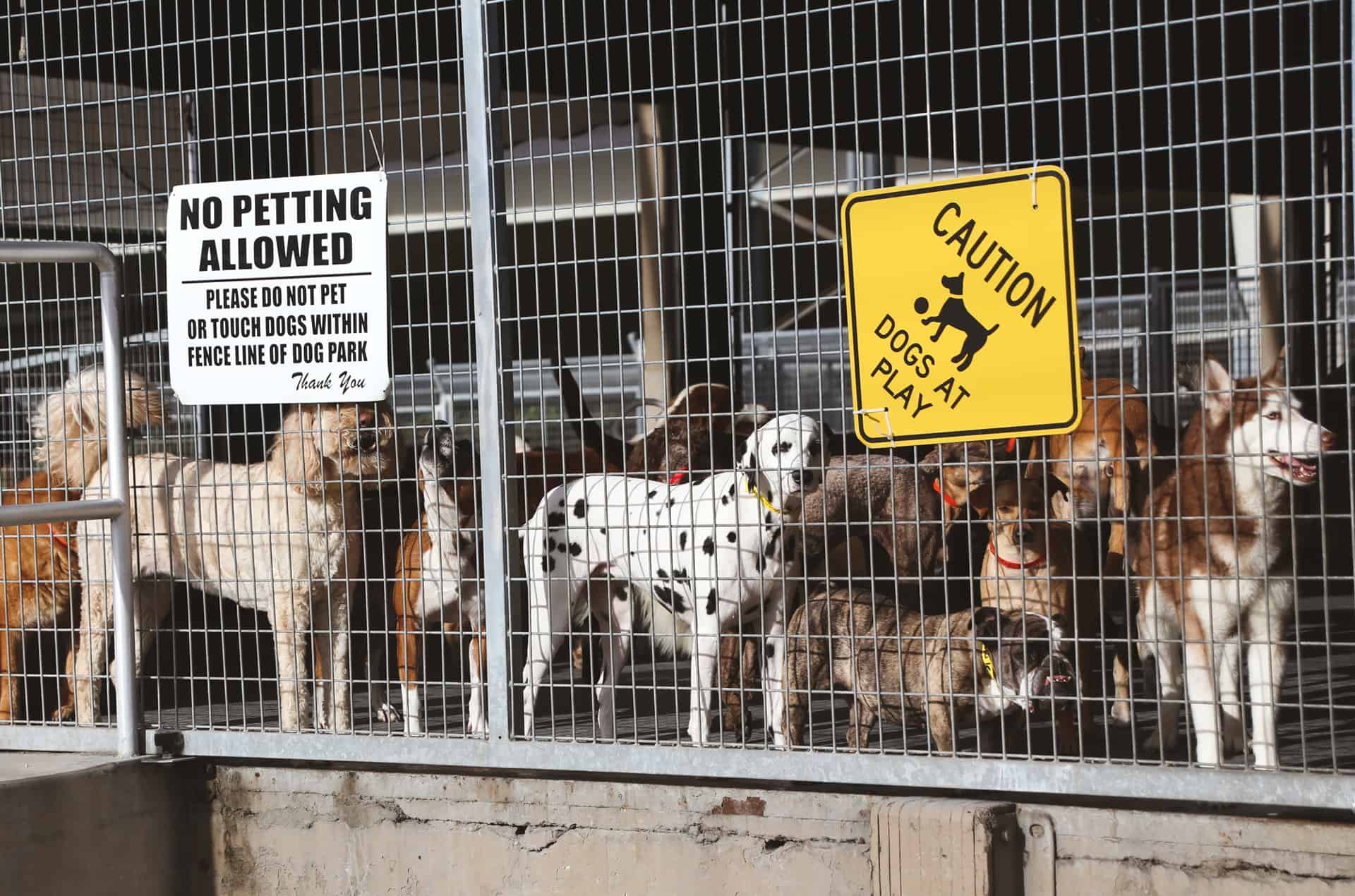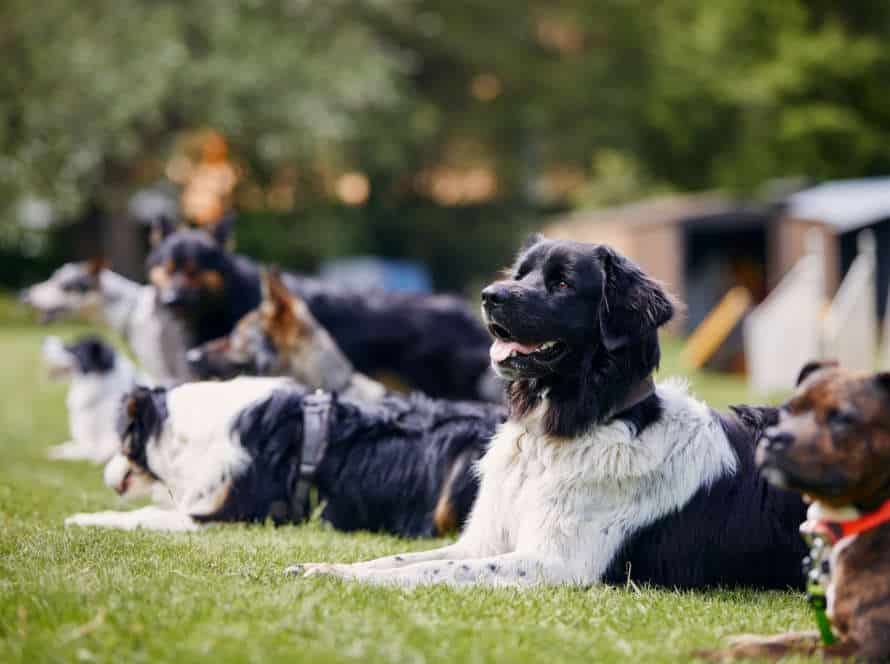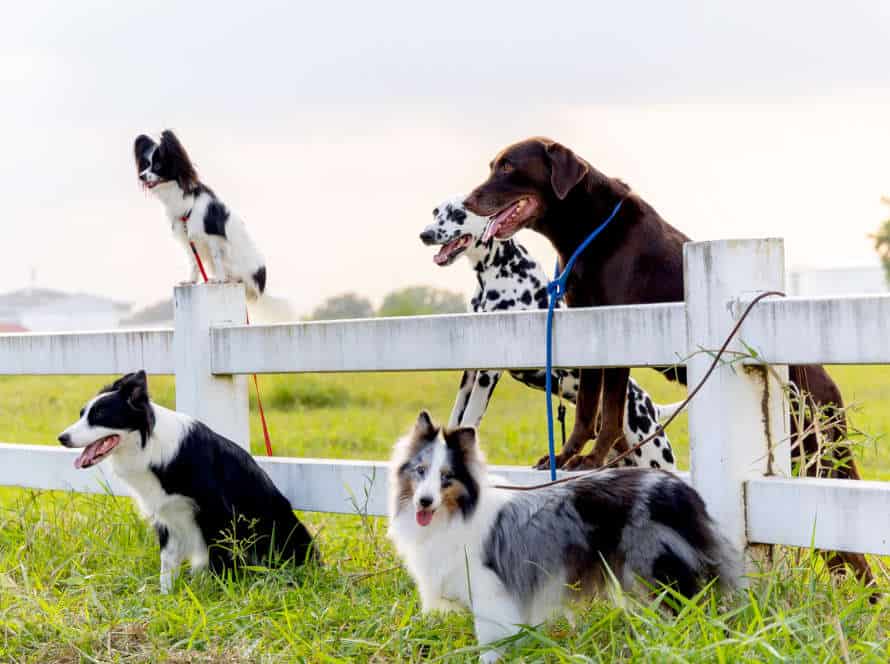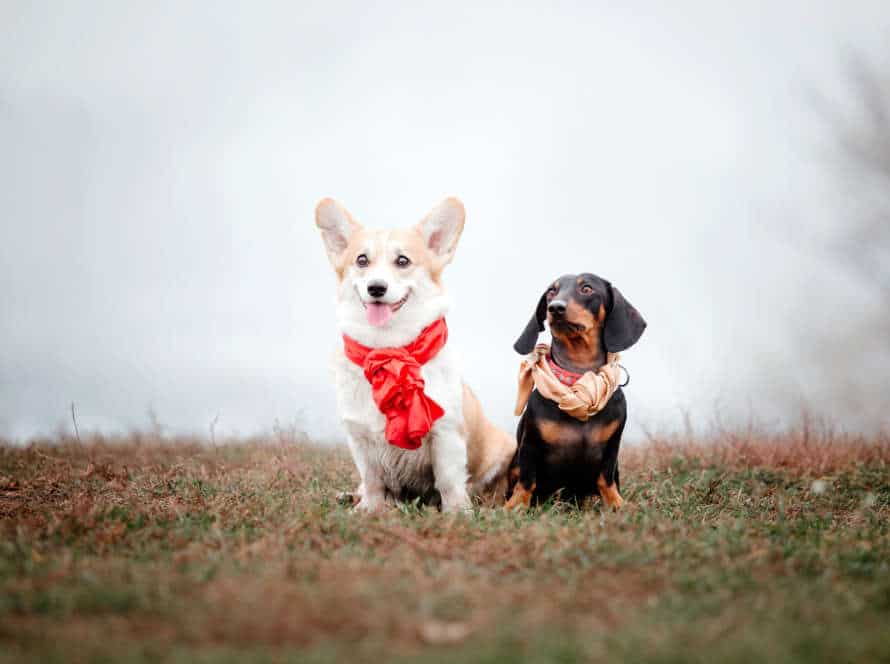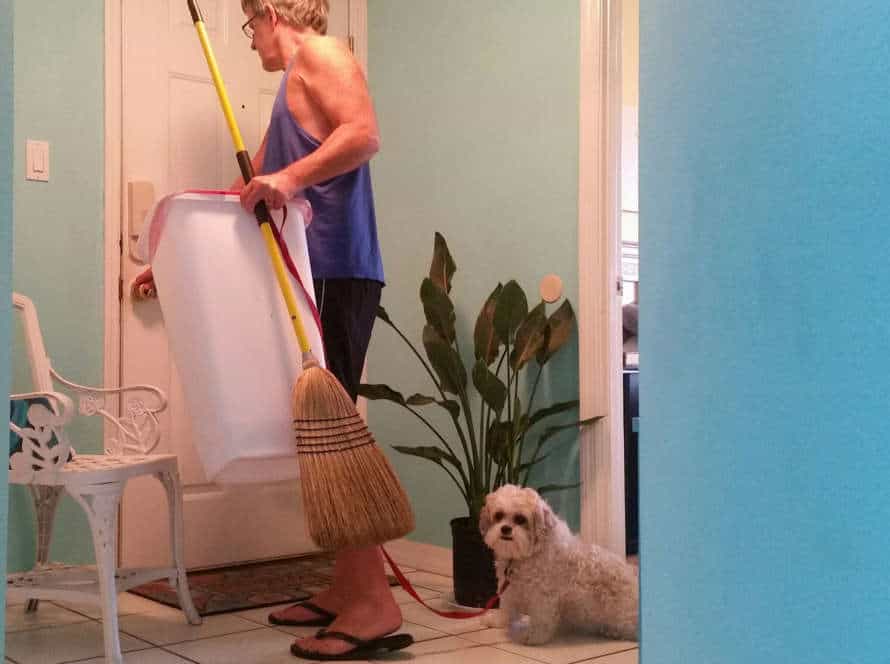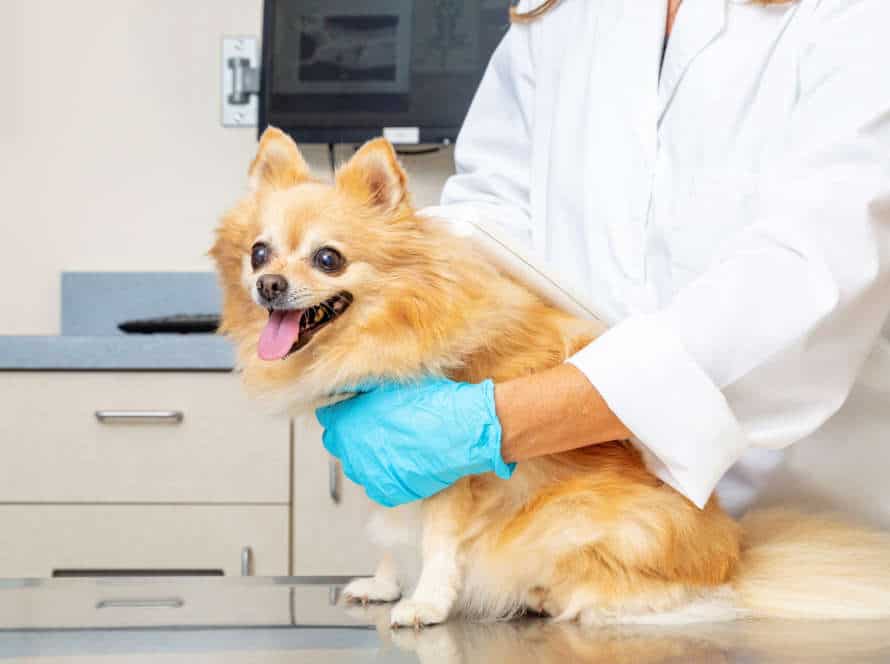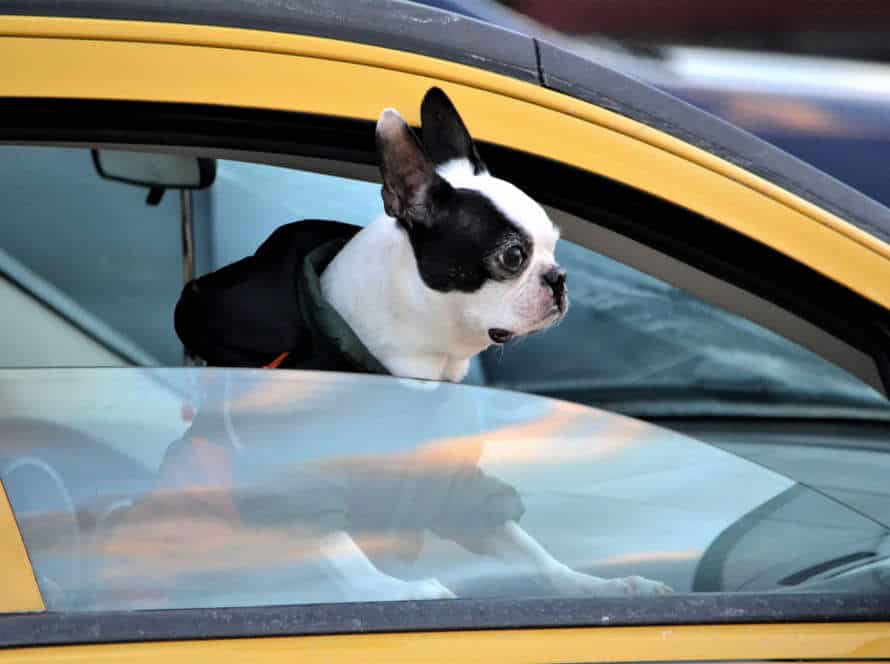Fostering a Positive Training Environment for Your Dog
Creating a positive training atmosphere for your pooch is important for setting up good behavior and a strong bond between you and your pup. Here are some tips:
- Use positive reinforcement like words of approval, snacks, and toys. Avoid physical punishment or mean tactics.
- Make a consistent routine and plan for your doggy’s training time to generate a feeling of steadiness and familiarity.
- Be serene and don’t get mad at your dog for not understanding commands. This might cause a negative environment and impede progress.
- Keep the sessions short and often, slowly raising the level of difficulty as your pup becomes more talented.
- Finally, have a blast and savor spending time with your furry pal when training. Positive training experiences benefit both you and your dog, making your relationship stronger and encouraging good behavior.
Setting Up Your Training Area
Setting up an effective training area for your pup is key to them comprehending the commands you give. Make sure your pup is comfy in their training spot! Here are some tips for setting up their area:
Choosing a location
Choosing the right area for training your pup is major for creating a positive training environment. This will help them learn better and be more obedient. Here are some tips to think of when choosing a place:
- Pick somewhere quiet with no interruptions.
- Check the safety of the area, making sure there are no sharp objects, slippery floors, or loose furniture.
- Avoid places with loud noises, bright lights, or bad smells.
- Pick a spot where your dog can focus on you and not be bothered by other dogs or people.
- Once they’ve mastered the training, practice in new areas with more distractions.
Patience and consistency are essential when training a dog. Stick to your routine and your pup will improve, making training a fun bonding time for the two of you.
Preparing the training area
Setting up the perfect training space for your pup is key. Here’s what to do:
- Pick a quiet and peaceful spot – dogs can get distracted easily, so a chill atmosphere will help them focus.
- Give them lots of room to move about.
- Remove anything that may distract them from learning.
- Use a non-slip surface to avoid accidents.
- Have all the necessary training tools close by so rewards are at hand.
Crafting a space that is conducive to learning and positive reinforcement is essential to successful dog training. Stick to these steps, and you and your pup will be thriving in no time!
Plus, always finish up training on a high note. Giving your pup a treat or extra love and attention after a good session can strengthen your relationship with them.
What to keep nearby during training
Setting up a dog’s training area? Keep these things close.
Treats. Essential for positive reinforcement training. Have small, high-value treats ready for rewarding good behavior.
Toys. They’ll keep your pup engaged and motivated. Have some of their favorites nearby.
Reward control? Leash and collar are a must. Even if training’s indoors.
Never forget water. Bowl of fresh water. Especially if sessions are long or pup’s panting or drooling.
Log training. Track progress and tweak plan if needed.
Using Positive Reinforcement Techniques
Positive reinforcement training is an effective way to teach your dog new skills and behaviors. Reward or praise their desired behaviors! Science shows us this is the best way to teach dogs. It encourages good behavior, and helps build trust between you and your pup. Here, we look at various positive reinforcement techniques you can use to create a positive training environment for your pooch.
Understanding the concept of positive reinforcement
Positive reinforcement is a way to train your dog. Reward desired behaviour and avoid punishing bad behaviour. Here are some techniques:
- Give treats, praise and toys when your dog obeys commands or behaves well.
- Be consistent with commands and rewards so your dog knows what to do.
- No punishing for bad behaviour – this can cause anxiety and fear.
- Make training enjoyable – your dog should associate it with fun and pleasure.
Pro tip: With positive reinforcement, your dog will learn quickly, bond with you and have fun!
The types of positive reinforcement
Positive reinforcement is a must for a positive training environment for your pooch. There are different types of positive reinforcement you can use to stimulate good behavior. Here are the most effective ones:
- Treats: Give small, soft, easy-to-chew treats to your pup when they do something good.
- Praise: Positive verbal reinforcement like praising, petting and playtime helps build a strong bond between you and your pup.
- Clicker Training: Clicker training is a popular form of positive reinforcement. It uses a clicker to create a specific sound your dog will associate with good behavior.
- Toys: Using toys as a reward is a great way to reinforce positive behavior and have fun with your pup. Choose toys your pup loves and are safe for them to play with.
By using these types of positive reinforcement, you can create an environment that encourages good behavior and strengthens the bond between you and your pup.
Tips for effective positive reinforcement training
Positive reinforcement training is a humane and effective way to train your pup. For successful training, here are some tips:
- Be consistent – pick one command/behavior and reward each time your dog does it.
- Time it right – reward immediately after the action.
- Be positive – use a happy voice and show affection.
- Frequent training – break up long sessions into shorter ones.
- Patience – take your time, remain consistent and eventually your canine will learn.
Positive reinforcement will help you and your furry friend build a strong bond.
Avoiding Negative Reinforcement Techniques
Training your pooch? Positive reinforcement is great for encouraging desired behaviors and creating a positive learning environment. Negative reinforcement? No way! Avoid it. Here’s how:
- Tip 1 – Don’t use punishment.
- Tip 2 – Build a relationship with your pup.
- Tip 3 – Make sure the training experience is positive.
Understanding the concept of negative reinforcement
Negative reinforcement is a technique that removes an unpleasant stimulus to motivate certain behavior in animals. It’s important to understand it for dog training. Here are ways to avoid negative reinforcement and foster positive training:
- Rewards-Based Training: Use treats, toys, and verbal affirmations to get your dog to repeat good behavior.
- Communication: Make sure your dog understands what you want.
- Consistency: Be consistent with your training and knowledge of your dog’s behavior.
- Patience: Give your dog enough time to learn.
Using negative reinforcement can damage the trust between you and your pet, and cause fear and anxiety. Avoid it to create a positive training environment.
Pro Tip: If you’re having difficulties, consult a professional dog trainer for a comprehensive plan.
The types of negative reinforcement
Negative reinforcement is an approach to training where a behaviour is made more likely to happen by taking away something unpleasant or disliked. But, not all sorts of negative reinforcement are suitable for dogs, with some potentially having a bad effect on their wellbeing.
Here are the 3 types of negative reinforcement more often used in dog training:
- Escape: This involves removing an unpleasant stimulus when the dog does the desired behaviour. For example, releasing the pressure on a leash when the dog moves towards the desired direction.
- Avoidance: This type of negative reinforcement is where you stop an unpleasant stimulus from happening by asking the dog to do the desired behaviour. For example, asking the dog to sit before opening the door to stop jumping behaviour.
- Punishment: This type of negative reinforcement is where an unpleasant stimulus is given when the dog does something unwanted. For example, using a shock or prong collar to stop barking behaviour.
To protect the mental and physical health of your dog, it’s important to either avoid or reduce using punishment-based negative reinforcement methods and focus on more positive and reward-based training methods.
The potential dangers of negative reinforcement
Negative reinforcement is a powerful, yet controversial, training technique used by many pet owners. However, this method can have severe repercussions. It increases fear and anxiety in dogs, leading to more behavioral problems than before. This can also cause physical and emotional harm, thus breaking your trust and affection for your pup.
Rather than negative reinforcement, opt for positive reinforcement techniques. For instance, use reward-based training, treats, and praises. These will encourage good behavior without causing distress.
A positive training environment enhances the bond between you and your pup. It makes life more enjoyable for both of you!
Consistency and Patience in Training
Training your pup is a must when owning a pet. Creating a positive environment is the key to helping them learn and grow. Consistency and patience are two important elements to remember when training. It takes time to build good behavior habits, so it’s vital to stay consistent and remain patient! Let’s look at the importance of having consistency and patience during training.
The importance of consistency in training
Consistency is a must when training your doggo! Set up a routine and keep to it. Without consistency, your pup may get confused and find it harder to learn new commands.
Establishing a regular schedule for feeding, exercising and training is key. Use the same command language and tone of voice every time and make sure to have clear boundaries. Provide positive reinforcement for good behaviour and be patient with your pup – training takes time!
Remember to build a strong relationship with your companion, and most importantly, stay consistent! Pro tip: Get everyone in the family on board to ensure a better-trained and happier doggo.
Maintaining patience throughout the training process
Training your pooch can be a tough job. But, with consistency and patience, you can make it easier. Here’s how:
- Set realistic goals for your pup. Take into account their age, breed, and temperament.
- Break training tasks into parts. Focus on one task at a time.
- Reward good behaviour with treats and praise. Make training enjoyable.
- Don’t be disheartened if pup doesn’t learn right away. Notice their progress and celebrate successes.
- Take breaks. For the pup and yourself.
- Remember, every doggy learns at their own rate. So, stay consistent and patient for a positive training environment.
Tips for staying patient during challenging training sessions
Consistency and patience are the keys to reaching fitness objectives. Here’s how to stay patient during tough workouts:
- Focus on progress, not perfection. Celebrate each milestone, even if it’s just one more repetition or heavier weight.
- Stay motivated with the advantages of exercise: improved health, increased strength and reduced stress.
- Take a break when feeling drained or overwhelmed. Take a second to breathe or stretch before continuing.
- Don’t compare yourself with others. Your fitness voyage is individual and special, and comparisons will bring on feelings of inadequacy and irritation.
- Be kind to yourself. Don’t be hard on yourself if you miss one day or battle with an exercise. Remember that progress takes time and hiccups are a standard part of the journey.
Pro tip: Fitness is a marathon, not a sprint. Remain consistent, prioritize your health and take it one day at a time.
Understanding Your Dog’s Behavior
Training your pup is key to forming a great relationship. Knowing when certain behaviors are OK can be tough. To build a good training atmosphere, it’s vital to comprehend how your dog talks and why they respond to certain things.
Let’s look into understanding your dog’s behavior.
Recognizing positive behaviors for reinforcement
Recognize positive behavior in your pup for reinforcement. Positive reinforcement means rewarding your pup for good behavior. This way, they will do the same thing in the future.
Look for these behaviors in your pup:
- -Good posture
- -Alertness
- -Eye contact
- -Wagging tail
- -Following commands
- -Playfulness
When you spot these behaviors, use a treat or verbal praise. For example, give your pup a treat and say “good boy!” enthusiastically when they follow a command. Be consistent with positive reinforcement to help your pup’s behavior. Pro tip: positive reinforcement makes training more effective and enjoyable for both you and your pup.
Understanding negative behaviors for modification
To alter negative behaviors in your pup, it is essential to first comprehend why they are displaying the conduct. Here are common negative behaviors and ways to change them:
- Barking: Too much barking can be due to fear, stress, or poor socialization. To modify this, determine the cause and create a tranquil environment. Reward quiet behavior and gradually up the time between rewards.
- Chewing: Chewing may be caused by boredom, stress, or teething. To modify, give suitable chew toys and mentally challenge your dog with puzzles or games.
- Aggression: Aggression could be due to fear, territory, or lack of socialization. To modify, identify the trigger and take your dog away from the situation. Carefully reintroduce your dog to the trigger and reward calm behavior.
- Jumping: Jumping could be a result of excitement or lack of control. To alter, ignore and turn away from your dog until they are peaceful. Reward only when all four paws are on the floor.
By understanding the root causes of negative behavior in dogs and addressing them in a positive and consistent manner, owners can build a healthy and joyful environment for their furry companions.
Identifying potential triggers for negative behavior
Identifying triggers for negative behavior in your pup is crucial to developing a good training atmosphere. These triggers may be:
- Fear: Loud sounds, new faces, tight spaces, or domination can result in fear-induced negative responses.
- Separation anxiety: When left alone, anxious dogs may bark, dig, or break things; all bad behaviors.
- Lack of socializing: Dogs with little experience around people and other dogs might become aggressive or scared in an unknown setting.
- Medical issues: Physical pain, illness, or discomfort from medical conditions may cause negative reactions.
By understanding and avoiding these triggers, you can create a positive environment and encourage the behavior you want. Providing a peaceful, stable home allows your pup to grow and helps with behavior modification.
Incorporating Fun and Games into Training
Training your pup doesn’t have to be dull! Incorporate fun and games into their training routine. It’s an effective way to create a positive learning atmosphere. Games are also great for building the bond between you and your pet. Plus, they keep them motivated.
This section will discuss how to use games in training.
The benefits of incorporating fun and games into training
Incorporating fun and games into training with your pup has many advantages. Like forming a positive training atmosphere and enhancing obedience and behavior.
Benefits of having fun during training include:
- Raises motivation: Mixing fun and play increases pup’s motivation to learn and take part in training.
- Strengthens bonding: Playing together creates a strong bond between you and your pup, making training enjoyable for both.
- Boosts obedience: Making training more fun and rewarding helps your pup remember and perform new commands and behaviors.
- Reduces stress: Adding fun to training can reduce your pup’s stress and make them more relaxed, leading to better training results.
These benefits make incorporating fun and games an important part of positive dog training.
Examples of easy games to play during training
Make training with your pup fun and effective by adding in easy games! Here are three to try:
- Fetch: Throw their favorite toy and command them to bring it back. Use this game to teach your dog to come back or basic obedience like “drop it“.
- Hide and Seek: Hide in a place where your dog can easily find you, then call their name. Reward with treats or cuddles when they find you.
- Tug of War: This game is perfect for training your pup to drop an object on command and using their strength.
These games will keep your pup stimulated and happy, and make training enjoyable for both of you!
Tips for making training a fun and rewarding experience
Train your pooch and have a great time while doing it! Here are some helpful tips to make training fun and successful:
- Keep training sessions short and often, to prevent too much info for your pup.
- Reward good behavior with treats, kind words, and playtime.
- Spice up the routine with activities like tug-of-war, hide-and-seek, and fetch.
- Change up the exercises so your dog doesn’t get bored.
- Be patient and celebrate your pup’s successes!
Frequently Asked Questions
1. How do I foster a positive training environment for my dog?
To foster a positive training environment for your dog, you need to make sure that you have a calm and relaxed demeanor when working with your dog. You should also use positive reinforcement and reward-based training methods instead of punishing your dog for bad behavior. Make sure to provide plenty of praise and treats when your dog does something right.
2. Can I train my dog myself?
Yes, you can train your dog yourself. However, it is important to have some basic knowledge of dog behavior and training techniques. Consider taking a training class or reading a book on dog training.
3. How long does it take to train a dog?
The length of time it takes to train a dog can vary depending on the dog’s breed, age, and temperament, as well as the type of training method used. It may take several weeks or even months to see significant changes in your dog’s behavior.
4. Can all dogs be trained?
Yes, all dogs can be trained, regardless of breed or age. However, some dogs may require more patience and consistency than others.
5. What are some common training mistakes to avoid?
Some common training mistakes to avoid include using punishment-based training methods, not staying consistent with your training, expecting too much too soon, and not providing enough positive reinforcement.
6. How can I address bad behavior in my dog?
To address bad behavior in your dog, you should first identify the root cause of the behavior. Then, use positive reinforcement to encourage good behavior and discourage bad behavior. Consider seeking the advice of a professional dog trainer if the bad behavior persists.

